This website uses cookies so that we can provide you with the best user experience possible. Cookie information is stored in your browser and performs functions such as recognising you when you return to our website and helping our team to understand which sections of the website you find most interesting and useful.
Gérard Bertrand: Pioneering biodynamism and joie de vivre
Gérard Bertrand is to biodynamic and organic wine what Bernard Tschumi is to progressive architecture. It takes the right balance of vision, intelligence and extreme confidence to transform a niche into an aspirational, premium-priced luxury item, discovers Kathleen Willcox.
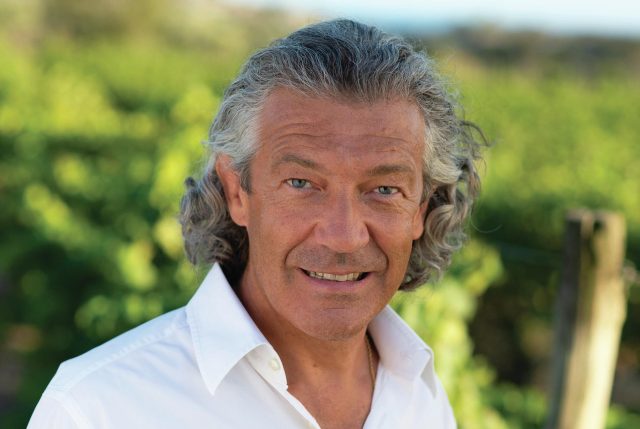
The odds of Bertrand’s improbable rise from the son of a winemaker in French fly-over hicksville to the BFF of rock stars and maker of the most expensive ($200) and critically beloved rosé and orange wines in the world were not good.
He joined his first wine harvest in 1975, alongside his father, Georges Bertrand at the family winery, Domaine de Villemajou. His father was determined to raise the profile of the Languedoc, then primarily known as a purveyor of generic, bulk wine. Knowing the terroir and what it was capable of, Bertrand says now, his father was confident that the Languedoc was capable of producing “terroir-driven premium wine.”
While he supported his father’s efforts, the 6-foot 5-inch Bertrand initially focused more of his energy on his successful rugby career with RC Narbonne and Stade Francais. In 1987, when his father died unexpectedly, he took over Villemajou, and five years later, launched his eponymous brand.
Elevating the ‘doc
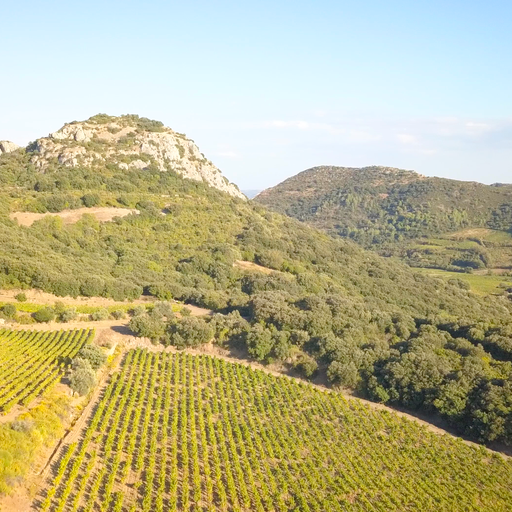
Bertrand adopted his father’s mission of elevating the region’s reputation by creating wines that honor the Languedoc’s roots through carefully grown and produced wines made from 27 grapes, many of which are indigenous to the region. But he added a layer to his father’s foundational vision.
After a health crisis, which he says he completely resolved, not with Western medicine, but through a drastic change in diet, Bertrand saw an opportunity to transform the quality of the wine he made through biodynamic agriculture.
“When I started learning more about the principles of biodynamic agriculture, I was inspired for two reasons,” Bertrand says.
“One, because of my experience using homeopathic medicine changed my life. And two, because I believe that to reveal a sense of
place, to truly find the terroir and create the best wine, you need to achieve balance in the earth.”
The best way, he says, is by eliminating chemicals.
“When we stopped using chemicals and potassium in the vineyard, we not only created more balanced wines, we found they had more energy and vibrance,” Bertrand says.
Bertrand and his team initially converted just a few acres at his Cigalus estate to biodynamic agriculture, but now has 2,400 acres across 17 estates either certified biodynamic, or well on their way.
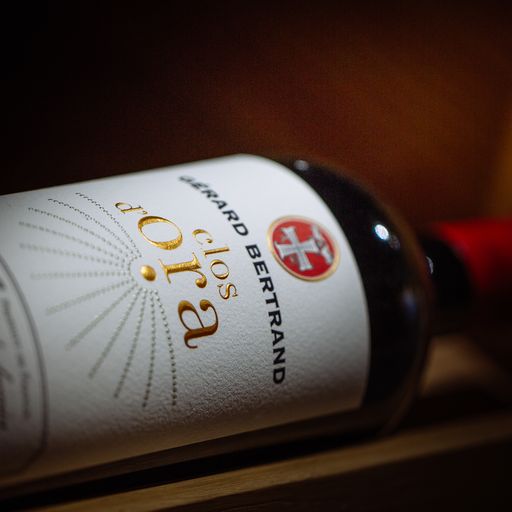
“I knew it was the only way to accomplish what I wanted,” he says. “Biodynamism may be centered in the vineyard, but there has to be more to it. It has to touch every aspect of the place and process.”
As with all things he touches, Bertrand is not content to do the bare minimum. He has recruited mules to work the land at Château de la Soujeole, Clos d’Ora, and Clos du Temple, tricky vineyards with steep inclines in places and challenging soils, favoring the animals’ lighter weight when compared to tractors and the manure they leave in their wake, which enriches the microbial life of the soil. The estates in the Corbières area welcome 900 sheep to prune the vines when harvest is over, enrich the soil and, as Bertrand explains, “strengthen the connection between animals, plants, the earth’s minerals on our estates.”
The vineyard team works with environmental nonprofits on agroforestry and biodiversity restoration projects in and around all of their estates, which total 5,000 acres of land, meaning that more than half are given over to the birds, mammals, amphibians and bees that Bertrand believes “belong there.” One, Domaine de l’Aigle, is even named for the Bonelli eagle, a protected species that can be found there. Visitors to his wine estate, Chateau L’Hospitalet, can try the estate honey, made after bees dine on the region’s
wildflower and garrigue, for a different sense of Languedoc’s terroir.
Creating the ‘ultimate’ wines
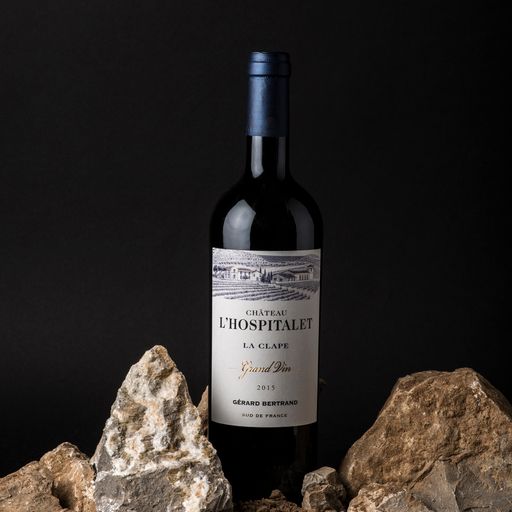
“Every aspect of what we are doing in and around the vineyard must be considered,” Bertrand says, explaining that even the place in which the wine is made must be designed “with the goal of balance in mind. The Golden Ratio.”
The Golden Ratio, also known as Phi or the Divine Proportion, can be found in nature, from the structure of a flower, to the human body, to the universe itself. In architecture, the Golden Ratio has been used in every great civilization, from the late Bronze Age and ancient Egypt, to Le Corbusier. When used successfully, symmetry and balance are achieved. The most famous examples are the Acropolis of Athens, the Great Pyramid of Giza, Notre Dame Cathedral in Paris and the United Nations Building in New York.
“At Clos du Temple, we wanted to reinforce that we saw the winery as a temple to rosé,” Bertrand explains. “We used the Golden Ratio in the building of the wine, and designed vats for the wines that are shaped like pyramids. We want to use the harness the energy of the earth and sky through the Golden Ratio and the pyramids. It is important to always push forward and use everything we can to create the ultimate wines. It is a full and complete concept. You cannot just focus on one element.”
Before the Bertrand’s decades long unofficial marketing campaign for the visually stunning, mountainous Southern French region—on the border of Spain and perched on the glittering Mediterranean—Languedoc was barely a blip in the wine world’s consciousness.
And while Bertrand is the animating force that set the region’s elevation into motion, he knows he could not have done the work alone.
“There were a few key partners who gave us a chance in the very beginning,” Bertrand says, mentioning prominent restaurant critics Henri Gault, who founded the instantly classic guide to fine wining and dining in France, Gault & Millau, with his colleague Christian Millau in 1965. “He believed in what we were doing, and the quality of our wine. Without their support initially, it would have more difficult to grow in the way we have.”
Underdog to juggernaut
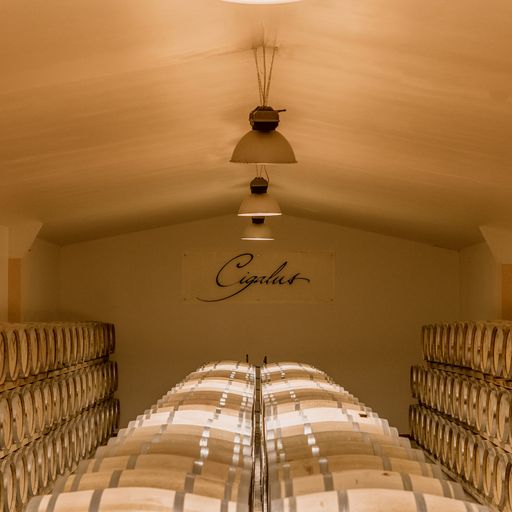
Since 1992, Bertrand has built an underdog into a juggernaut: with 415 full-time employees, 200,000 visitors to Chatuea L’Hospitalet and his wine estates, he is now the world’s largest producer of biodynamic wines.
Bertrand’s extracurricular projects—he helped Bon Jovi launch a juggernaut of a wine brand Hampton Water, built a resort dedicated to wellness and created a star-studded music festival that draws thousands from around the world—have helped turn his brand into a household name for oenos and has put the Languedoc on the world wine map.
Last year alone, exports for wines of all styles in Languedoc grow 17% by value, and red and rosé styles spiked 62%, according to the Conseil Interprofessionnel des Vins du Languedoc.
And his Cote des Roses Languedoc Rose and Villa Soleilla retail for $200 apiece—a testament to how far Bertrand has sent the region and his own brand up into the stratosphere.
The fourth color
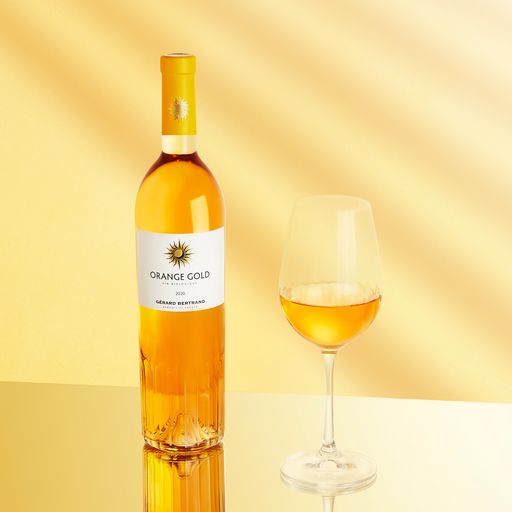
“Yes, we sell a $200 rosé and orange wine,” Bertrand says. “But we do it with a great deal of care. We want to create a new paradigm for Languedoc, but also for rosé and orange wines.”
Rosé and orange wine can be as serious, he maintains, as the Grand Vin in Bourgogne and Bordeaux.
“We wanted to create a new taste that did not exist,” he says of the Villa Soleilla. “This is the oldest wine in the world, created in Georgia 8,000 years ago. We took their concept, and added our own techniques and terroir.”
Bertrand and his team use grapes that have been grown in Languedoc for centuries—Roussanne, Grenache, Vermentino—and left the juice on the skins for 20 to 30 days, instead of the usual six months. Halfway through fermentation, the musts are places in French oak barrels and amphoras, aged for eight months, then bottled.

